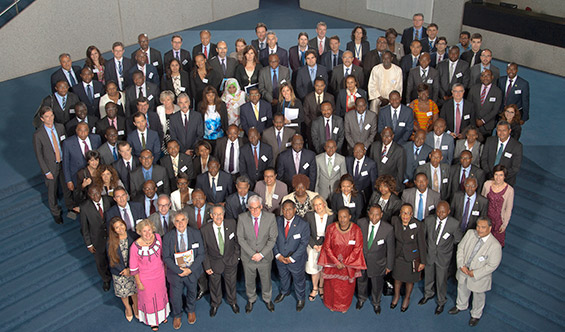ACP Ambassadors’ visit highlights EIB role in financing for development

Brussels, 17 July 2015/ ACP: Brussels-based Ambassadors and representatives of the ACP countries visited the European Investment Bank headquarters in Luxembourg, to discuss the Bank’s activities in Africa, the Caribbean and the Pacific, which are ultimately aimed at lifting people from poverty while promoting sustainable economic development.
The annual visit of ACP Ambassadors to the EIB, held on 8 July, focused on the performance of the Investment Facility, an instrument financed through the European Development Fund under the ACP-EU Cotonou Partnership Agreement, and managed by the EIB. For the period 2014-2020, ACP countries have access to EUR 1.134 billion through the Investment Facility; as well as EUR 2.5 billion in loans from the EIB’s own resources.
The President of the EIB Mr. Werner Hoyer said that since the creation of the Investment Facility in 2003, it has provided roughly EUR 4.8 billion for at least 200 operations in ACP countries. Together with the EIB’s own resources, this totals more than EUR 8 billion of financing, mostly for infrastructure schemes crucial for development. The Bank’s cross-cutting objective is to provide 25% of total lending for climate action.
The meeting discussed EIB’s role in financing development in ACP countries, aligning with global calls for the private sector to reinforce public funding to achieve development goals in the post-2015 era.
“All we do is driven by sustainability,” stated Mr. Hoyer.
While welcoming recent reforms and innovations made by the Bank in its approach to ACP regions, the ACP Secretary General Dr. Patrick Gomes also highlighted areas for improved effectiveness.
“We are facing many challenges – challenges in coordination and accessibility of funds to Micro, Small and Medium-sized enterprises (MSMEs), the primary targets of private sector development strategies in ACP countries,” Dr. Gomes told the meeting.
The Chair of the ACP Committee of Ambassadors, Vanuatu’s Ambassador Roy Mickey Joy echoed the call for accessibility to financing for MSMEs, which often do not meet the standard requirement of EUR 5 million minimum budgets for projects in order to be financed by EIB.
More coordination and synergies was also urged between EIB and regional institutions, as well as the simplification and improved flexibility of the instruments targeted for ACP countries. These include those instruments defined now by the EIB and those to be defined jointly in the future, in the framework of setting up EU “blending” facilities [combining grants and loans for development projects], through Caribbean Investment Facilities (CIF), the EU-Africa Infrastructures Trust Fund (ITF) and the Investment Facility for the Pacific (IFP).
Dr. Gomes added that the ACP-EU joint private sector development strategy should better facilitate MSME access to financial services.
The EIB made various presentations on new approaches and instruments for 2015-2020, including value chains, public-private partnerships (PPP), and blending. Success stories, such as Kenya’s Lake Turkana Wind Farm were discussed as case studies.
Responding to previous calls for increased support for MSMEs, the EIB reported that in 2014, 13 credit lines for SMEs and mid-caps were committed, and expected to result in 760 loans, with an average size of EUR 454 000 and tenor of 6.3 years. Three microfinances credit lines are also expected to provide 10 794 loans to final beneficiaries, of which 55% will go to women. The average loan size will be EUR 10 800 in this field. In all, these MSME credit lines are expected to sustain nearly 70,000 jobs.
The EIB is unique as the world’s largest public lender and the only multilateral financing institution supporting projects in both Europe and African, Caribbean and Pacific countries.
(Photo: Group photo from the annual visit of ACP Ambassadors and ACP Secretariat to the European Investment Bank headquarters in Luxembourg, on 8 July 2015.)
– Press ACP
More information on EIB activities in ACP regions
EIB in Africa, the Caribbean and Pacific, and overseas territories: Achievements so far and the Way forward (Powerpoint presentation by Heike Ruettgers, Head of Mandate Management Divisions)
EIB intermediated lending (Powerpoint presentation by Robert Schofield, Head of Dinancial Sector Division)
EIB activities in the PPP sector in the ACP countries (Powerpoint presentation by Francaseco Totaro, EIB PPP expert)
